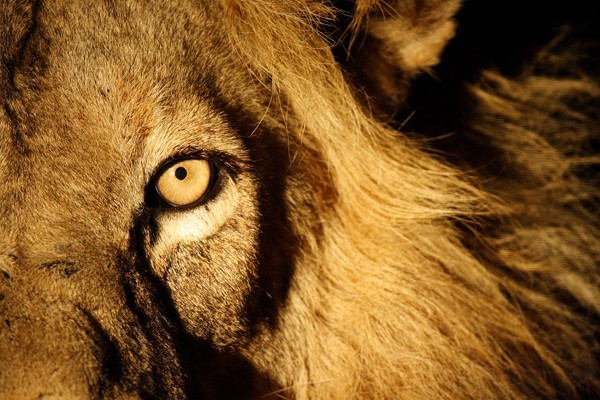Kalahari lions can survive without a permanent source of water. They can survive on the fluids of their prey and the moisture in wild plants.
A typical lion hunt involves a stalk and then a final rush. Lions can run at a speed of 60km per hour but cannot really sustain this for further than 100m.
Male lions rarely live longer than 12 years in the wild. Females can live as long as 16 years.
Lions prefer an easy meal and will scavenge as much food as possible.
A lions gestation period is approximately 109 days and they breed throughout the year.
Male lions can weight up to 227kg and females up to 152kg.
When a lion is about to charge, it lashes its tail up and down, flattens its ears, and roars simultaneously. It runs slowly and then more swiftly, with the head held low and the tail erect and stiff.
The body colour of a lion, whether seen in colour or black and white, allows them to blend into their surroundings by matching the colour of the vegetation. This is called concealing coloration.
Lions prefer to move along roads and pathways, especially after rain, when the grass is wet.
White lions are not albinos! True albinos have no colour pigmentation, with even their irises having a reddish colour. White lions are similar but have a darker pigmentation, especially behind the ears and the tip of the tail. White lions have been found in the Timbavati, the Klaserie as well as the Kruger National Park itself.




